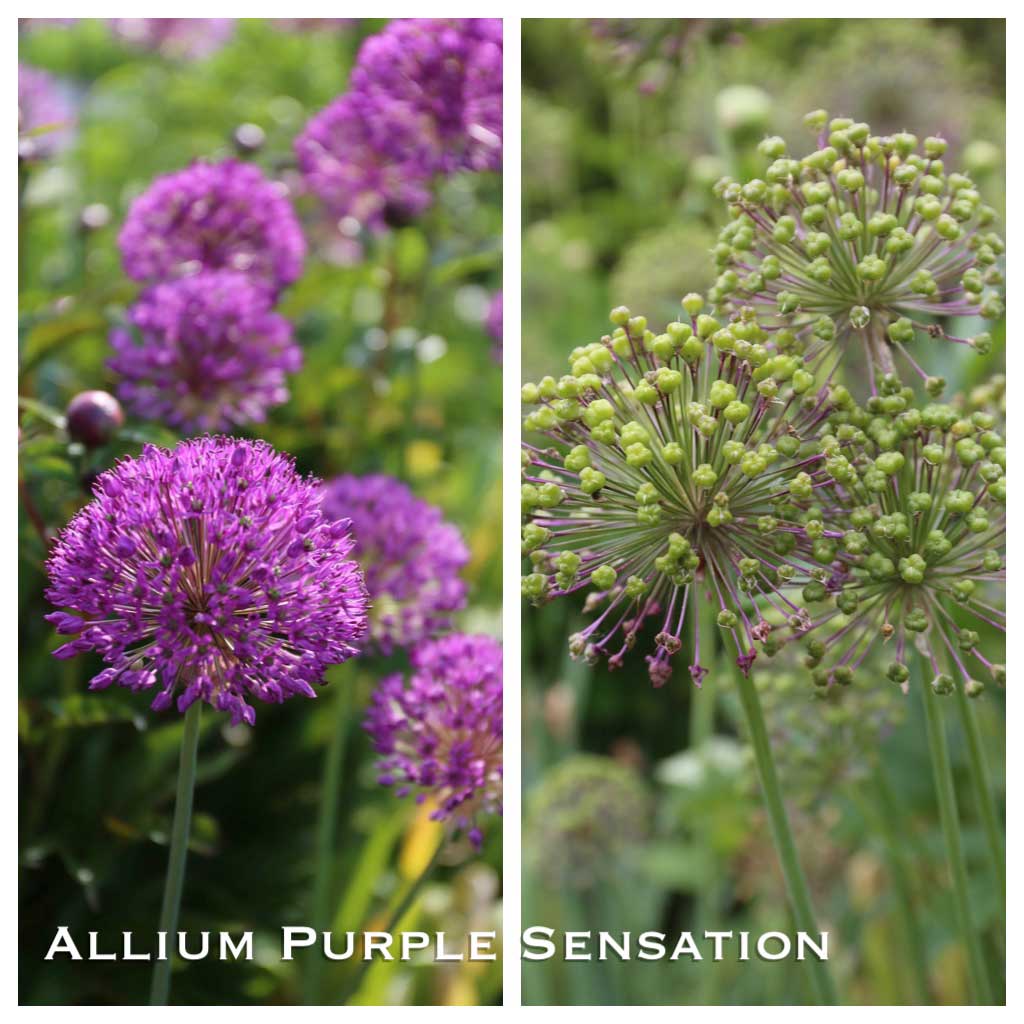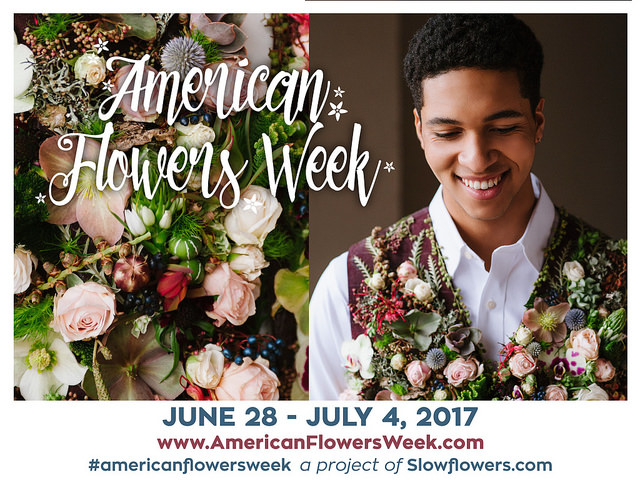Another Reason to Love Ornamental Alliums: Seed Heads!
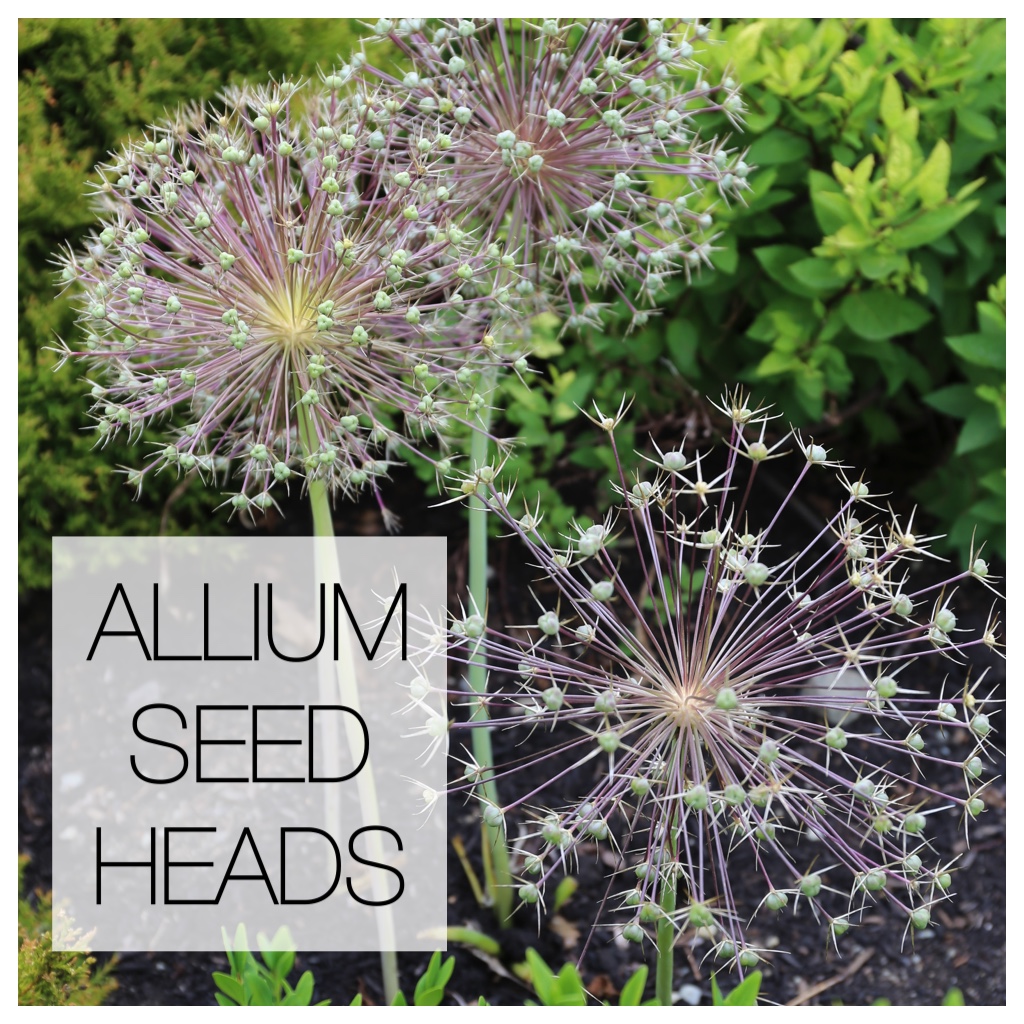
The big, round flower heads of ornamental alliums are irresistible — at least they are to me. My gardens now contain about a dozen different types, yet still I crave more. There’s just something so unexpected and playful about them. These hardy and reliable perennials are also long-blooming, pollinator-friendly and seemingly immune to diseases and pests, including deer.
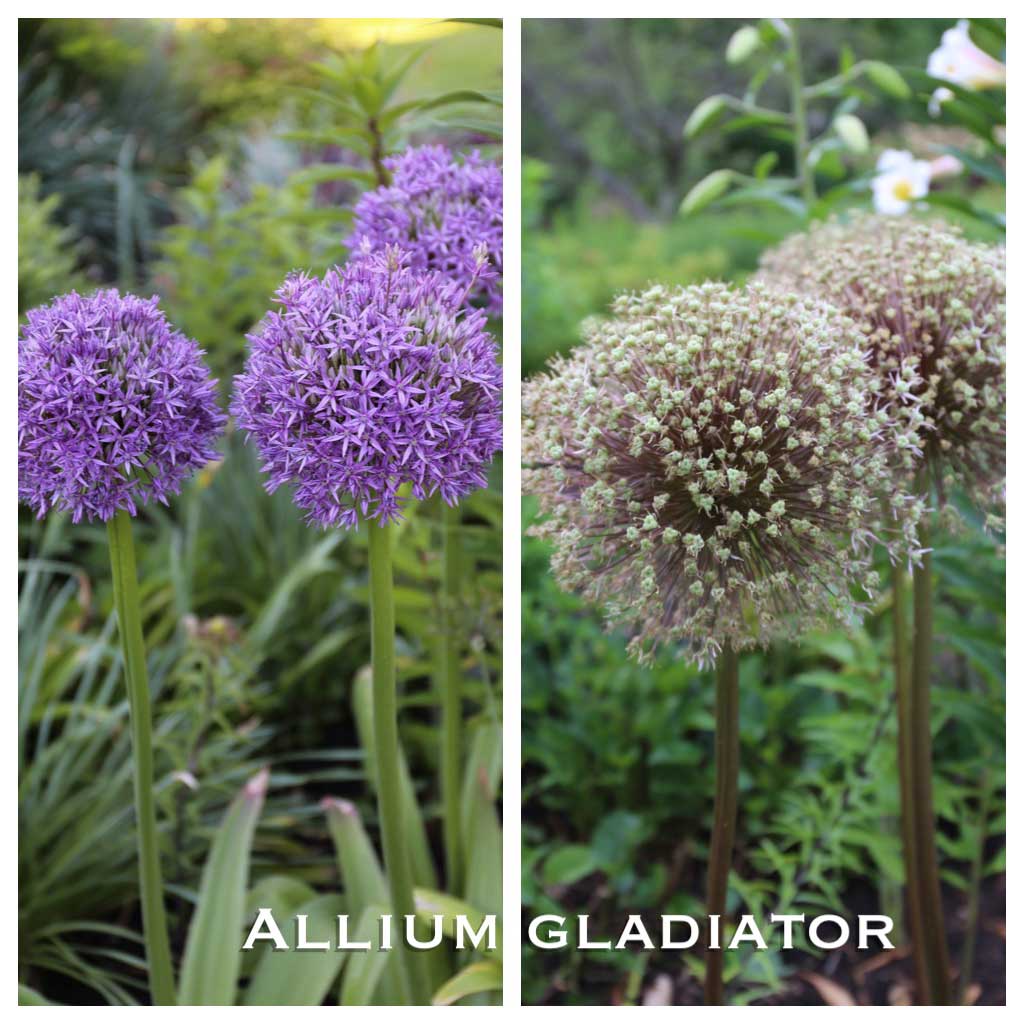
As if that’s not enough, here’s yet another reason to love alliums: their seed heads! Though the late spring/early summer flowers eventually fade and lose their color, what remains is still impressive — both in and out of the garden. Here are some ways to make the most of these decorative seed heads.
Use Them Fresh
You can cut allium seed heads while they’re still green and add them to fresh flower arrangements. Their color, shape and texture bring a special sparkle to home-grown bouquets. Allium Purple Sensation is ideal for this.
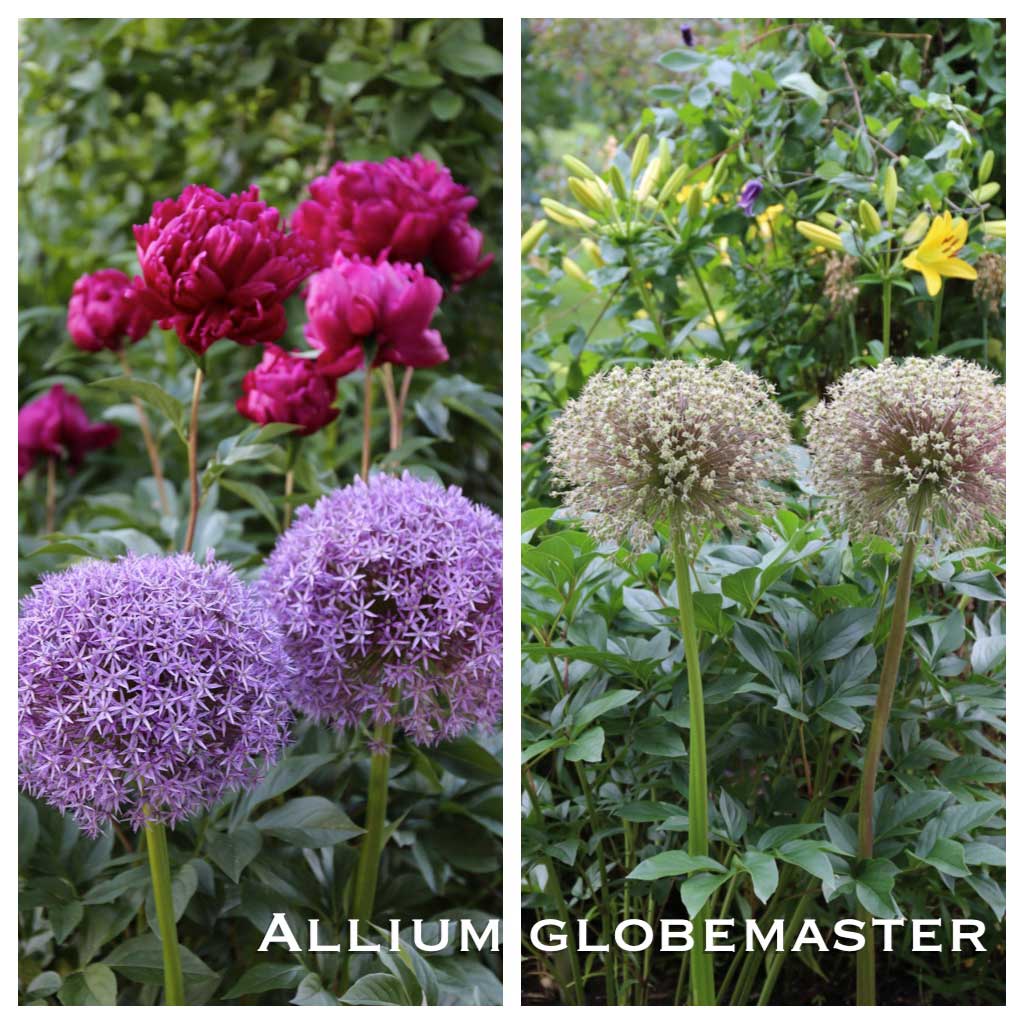
Leave Them in the Garden
You can leave the seed heads right in the garden where their unusual shapes and textures will continue to attract admirers. I find alliums with strong, thick stems such as Globemaster and Gladiator last the longest.
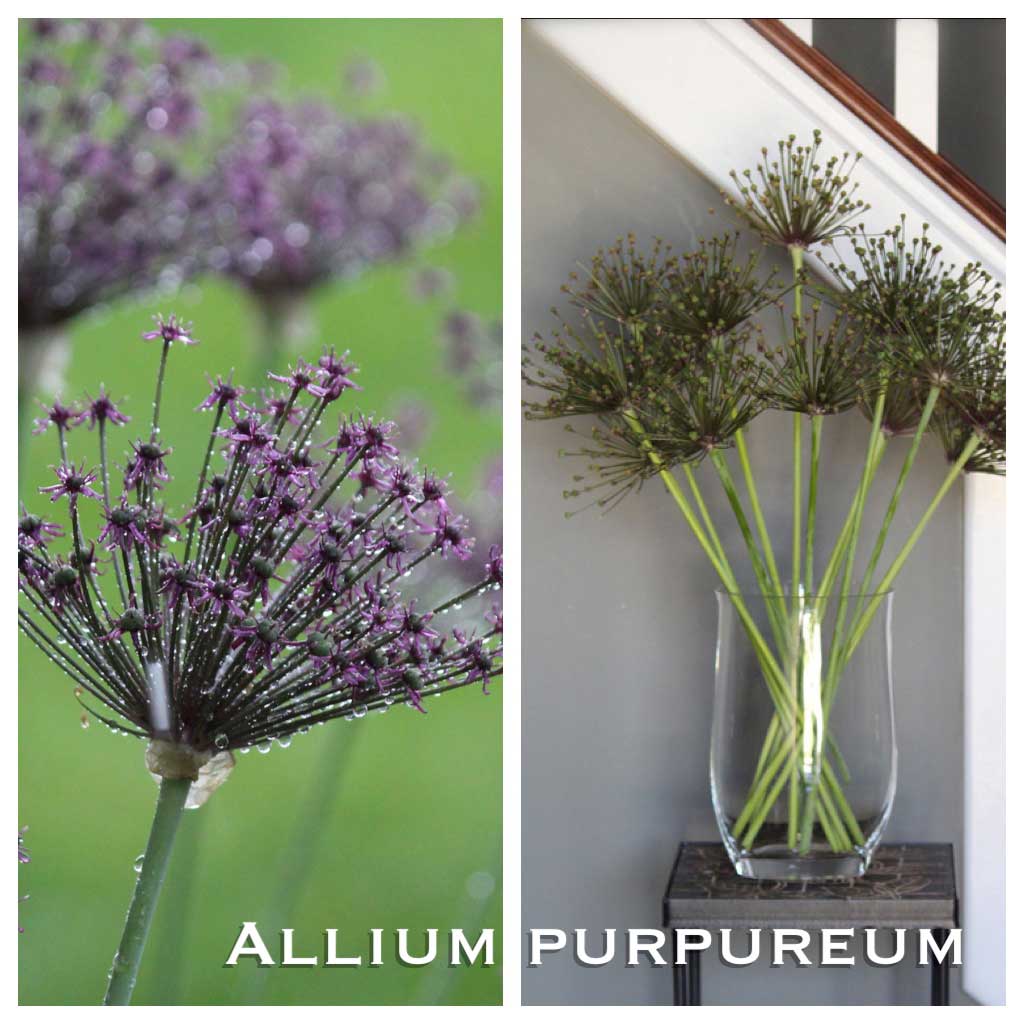
Display Them Indoors
You can cut the stems and bring them indoors to create striking flower arrangements that last for weeks or even months.
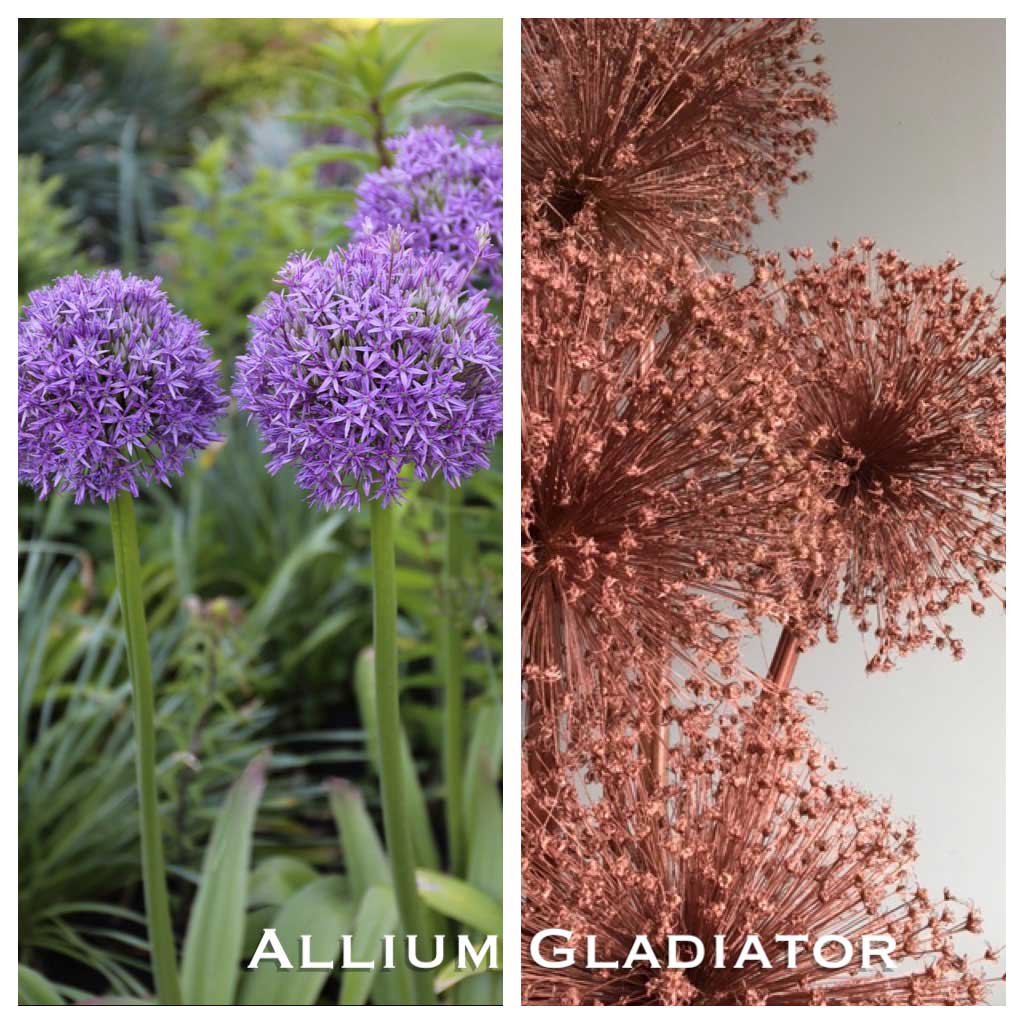
Spray the Dried Seed Heads
Another option is to let the seed heads dry completely and then paint them. Last year I dried some Gladiator seed heads and then gilded them with gold spray paint. This year I plan to paint some of them silver.
If you want to dry allium seed heads for displaying indoors, here’s a tip. The seed heads should be sprayed with paint or a clear fixative when they are dry relatively dry, but before the seeds start to be released. By sealing the seeds inside the capsule at the end of each “stem” you will preserve the starburst effect (as shown above) and won’t have to sweep up lots of seeds.
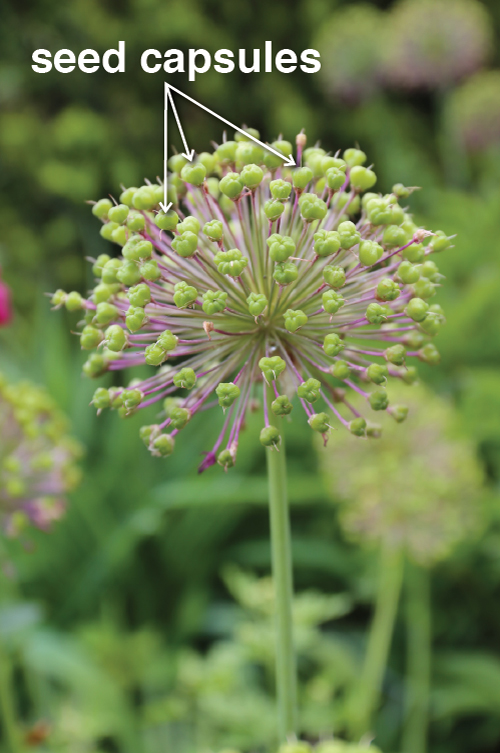
To see some beautiful dried alliums hanging from the rafters in an old stone barn in Wiltshire, England, check out this article on Gardenista.
The time to plant ornamental alliums is fall, and we ship bulbs from September through early November. Plan ahead to make sure you get the varieties you want. You can view our complete selection HERE and pre-order your bulbs between April and August. To learn more about these easy and impressive fall-planted, spring-blooming bulbs, read: All About Alliums, Types of Alliums, How to Plant Allium Bulbs (VIDEO), and Alliums for Every Garden.

